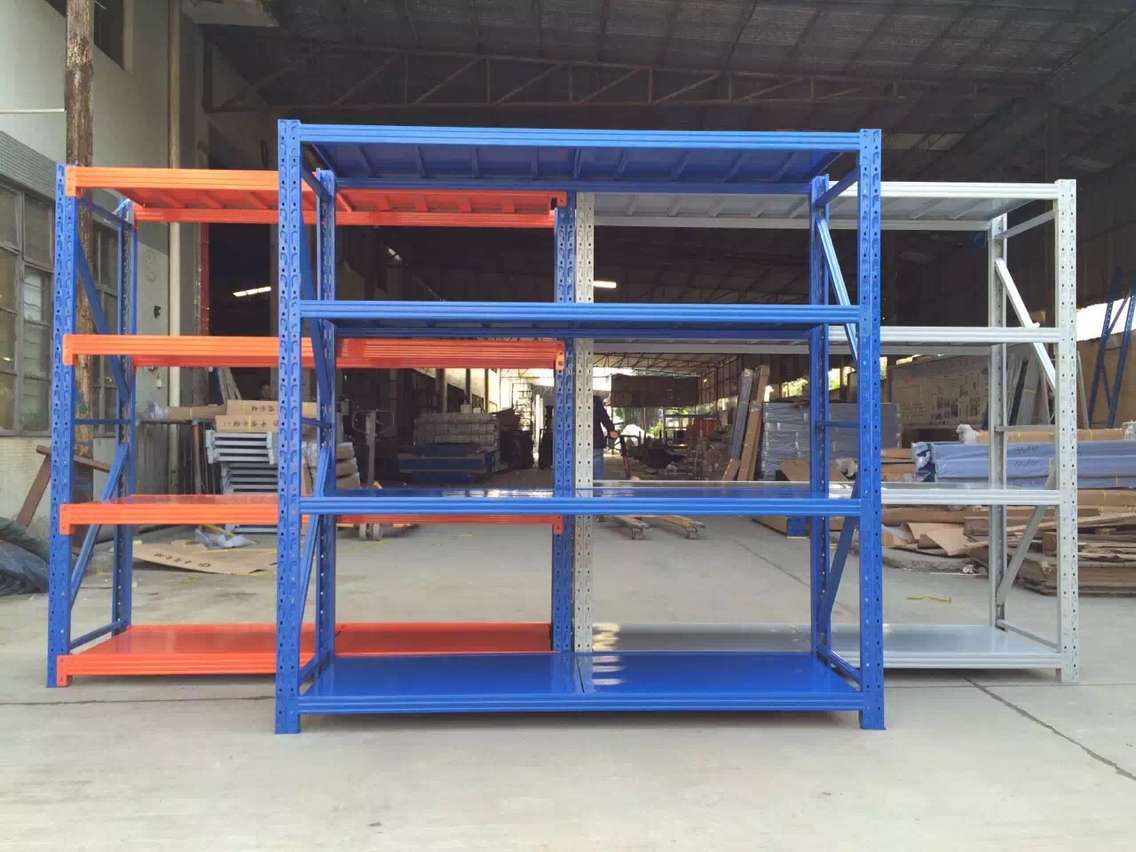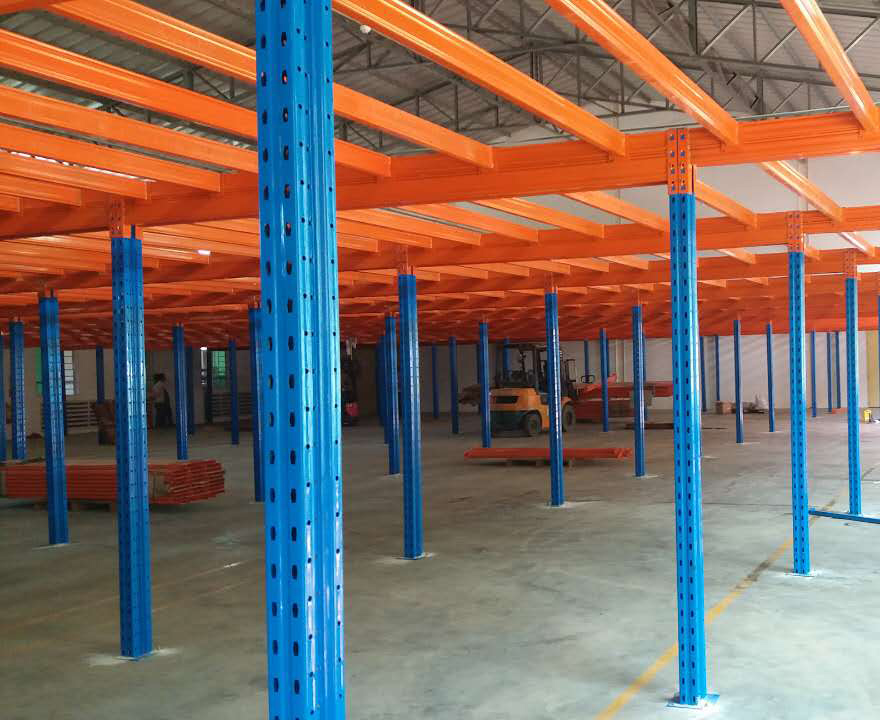When walking through any warehouse, factory, or large-scale storage facility, one element is almost universally present: the robust framework of metal industrial racks. These structures are the silent workhorses of logistics and inventory management, holding anything from raw materials to finished products. Choosing the right system, however, is far from a simple decision. It involves a careful balance of cost, application, and structural design. This article breaks down the key factors you need to consider, from initial price tags to long-term functionality, to help you select the perfect industrial storage rack system for your operation.

The cost of metal industrial racks can vary dramatically. You might find simple boltless shelving for a few hundred dollars, while a custom-designed, high-capacity automated storage and retrieval system (AS/RS) can represent a significant capital investment. Several core factors influence the final price:
Material and Gauge: The type of steel and its thickness (gauge) are primary cost drivers. Heavier-gauge steel supports more weight and offers greater durability, but it also comes at a higher price. The recent fluctuations in global steel prices directly impact the cost of all steel industrial shelving.
Type and Complexity: A standard pallet rack is generally less expensive per pallet position than a more complex system like cantilever racks for long goods or drive-in/drive-through racks for high-density storage. The engineering and manufacturing effort required increases with complexity.
Capacity and Height: The required load capacity per level and the overall height of the rack system are crucial. A rack built to hold 5,000 lbs per beam is costlier than one rated for 1,000 lbs. Similarly, taller systems require stronger upright frames and often need special installation equipment, adding to the cost.
Accessories and Finishes: Add-ons like wire mesh decking, post protectors, row spacers, and special safety locks add to the overall cost. While a basic powder-coated finish is standard, environments with high humidity or chemical exposure may require a more expensive protective coating.
Investing in high-quality metal industrial racks from a reputable supplier often pays off in the long run through enhanced safety, durability, and fewer replacements.
Not all storage challenges are the same. Selecting the wrong type of industrial storage rack can lead to inefficiencies, damaged goods, and even safety hazards. Here’s how different systems fit various applications:
Bulk Pallet Storage: For the vast majority of warehouses storing unit loads on pallets, selective pallet racks are the go-to solution. They provide direct access to every pallet, making them ideal for first-in, first-out (FIFO) or last-in, first-out (LIFO) inventory systems. Their versatility and relative simplicity make them the most common type of metal industrial racks.
High-Density Storage: When floor space is at a premium, maximizing cube storage is essential. Drive-in racking and push-back racking systems allow for pallets to be stored multiple deep, significantly increasing storage density compared to selective racks. While the cost per pallet position might be higher, the cost per square foot of facility space is often lower.
Long or Bulky Items: Storing lumber, piping, bar stock, or furniture requires a different approach. Cantilever racks with their long, unobstructed arms are perfectly suited for this task, providing easy access and efficient organization for awkwardly shaped items.
Smaller Item Storage: For storing parts, tools, or smaller boxes in a maintenance room or on a production floor, boltless shelving or sturdy steel shelving units are ideal. Their adjustable shelves offer flexibility for a wide range of item sizes.
Making the final choice requires a methodical assessment of your needs. Follow this decision framework to narrow down your options:
Conduct a Needs Analysis:
Inventory Profile: What are the dimensions and weights of your products? Do you use pallets, containers, or are items stored loose?
Inventory Turnover: What is your inventory flow? Do you need 100% selectivity (FIFO) or is LIFO acceptable? This will heavily influence your choice between selective and high-density metal industrial racks.
Equipment: What material handling equipment (e.g., forklifts, order pickers) will you be using? The type of equipment dictates required aisle widths.
Evaluate Key Features:
Adjustability: Look for systems that allow for easy beam height adjustment. Your storage needs will evolve, and your rack system should be able to adapt.
Durability and Safety: Ensure the system is designed to meet all relevant local safety standards. Look for robust connections and a design that includes safety locks to prevent beams from being accidentally dislodged.
Scalability: Consider whether the system can be easily expanded or reconfigured as your business grows.
Plan for Installation and Maintenance:
Professional Installation: Proper installation of metal industrial racks is critical for safety and performance. Always use trained and certified installers.
Regular Inspections: Implement a schedule for regularly inspecting your industrial storage rack for any damage, such as bent components or impacts from forklifts. Prompt repairs are essential.

Before placing an order, it is highly advisable to engage with a specialist. A professional can conduct a site survey to assess your floor conditions, ceiling clearances, and other critical environmental factors. They can also create a detailed layout plan to optimize space and workflow. Preparing your site, which may involve ensuring a level floor and planning for proper lighting, is a vital step that is often overlooked. A well-planned installation of your steel industrial shelving will ensure maximum efficiency and safety for years to come.
Selecting the right metal industrial racks is a strategic decision that impacts your operation's daily efficiency, safety, and bottom line. By thoroughly understanding your storage requirements, carefully comparing the types and costs of different systems, and partnering with an experienced supplier, you can make an informed investment. The right industrial storage rack system is not just a purchase; it's a foundational component of a streamlined and productive operation.
Q1: What is the typical weight capacity for metal industrial racks?
A1: The weight capacity for metal industrial racks varies enormously based on the type and design. Light-duty boltless shelving might hold 500-1,000 lbs per shelf, while standard selective pallet racks can often hold between 1,000 and 5,000 lbs per pallet position. Specialized, heavy-duty racking systems can be engineered to hold tens of thousands of pounds per level. Always consult the manufacturer's load capacity ratings for each specific component.
Q2: Can I install these racks myself, or do I need a professional?
A2: While some lighter-duty steel shelving units are marketed as DIY, the installation of most true metal industrial racks, especially pallet racks, should be handled by professional installers. Proper installation is critical for structural integrity and safety. Professionals ensure the racks are perfectly plumb, anchored correctly (if required), and that all components and safety locks are properly engaged, mitigating the risk of collapse.
Q3: How do I know if I need selective pallet racks or a high-density system?
A3: The choice hinges on your inventory and accessibility needs. Choose selective pallet racks if you need immediate access to every single pallet for a fast-moving, high-SKU inventory. Opt for a high-density system like drive-in or push-back rack system when you need to store a larger quantity of fewer SKUs and are willing to sacrifice some accessibility to dramatically increase your storage density within the same floor space.
Q4: What kind of maintenance do metal industrial racks require?
A4: Maintenance for industrial storage rack systems is primarily about vigilance and proactive care. Conduct regular visual inspections for signs of damage, especially dents or bends in upright frames from forklift impacts. Keep the racks clean and free of debris. Ensure that all pallets are properly positioned and that load capacities are never exceeded. Any damaged components should be replaced immediately with OEM parts from the supplier.
Q5: Are there specific floor requirements for installing these racks?
A5: Yes, the floor is a critical part of the system's stability. The floor must be level and have sufficient compressive strength to support the loaded metal industrial racks. Freestanding racks generally do not require anchoring, but in high-seismic zones or for very tall systems, anchoring to a concrete floor is often mandatory and a critical part of the engineering design. A site survey will determine your specific floor requirements.
 Wechat
Wechat
 Whatsapp
Whatsapp